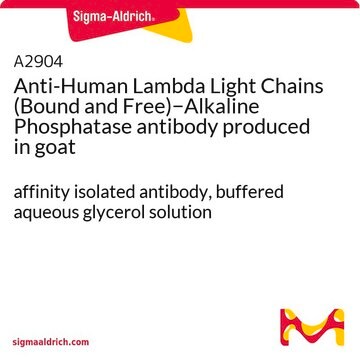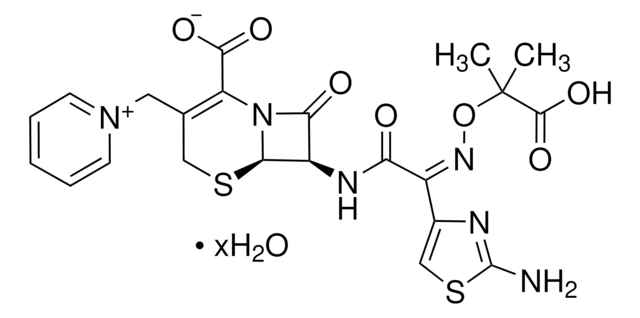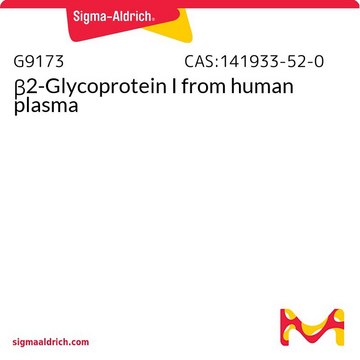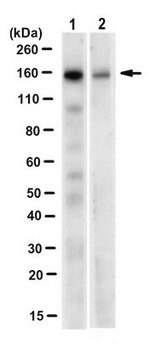推荐产品
生物源
rabbit
品質等級
共軛
unconjugated
抗體表格
affinity isolated antibody
抗體產品種類
primary antibodies
無性繁殖
polyclonal
形狀
buffered aqueous glycerol solution
分子量
antigen 80-85 kDa
物種活性
mouse
技術
immunocytochemistry: suitable
western blot: 1:1,000
UniProt登錄號
運輸包裝
wet ice
儲存溫度
−20°C
目標翻譯後修改
phosphorylation (pTyr421)
基因資訊
mouse ... Cttn(13043)
一般說明
Cortactin is encoded by the CTTN gene on chromosome 11 in humans. It is a cytoskeleton protein that facilitates assembly of cortical actin. It is expressed in most adherent cells and is a prominent substrate of protein-tyrosine kinase Src.
免疫原
synthetic phosphopeptide derived from the region of mouse cortactin that is phosphorylated on tyrosine 421.
應用
Anti-phospho-Cortactin (pTyr421) antibody produced in rabbit is suitable for immunocytochemistry and western blotting at a working dilution of 1:1,000
生化/生理作用
Cortactin is activated by phosphorylation of tyrosine kinases or serine/threonine kinases. It plays an important role in promoting lamellipodia formation, invadopodia formation, cell migration, and endocytosis. Cortactin regulates the interactions between components of adherens-type junctions and helps in organizing the cytoskeleton, cell adhesion structures of epithelia and carcinoma cells. During apoptosis, the encoded protein is degraded in a caspase-dependent manner. It acts as a regulator in invasion and migration of tumor cells. The overexpression of cortactin causes osteosarcoma carcinogenesis and along with FAK increases the risk of oral premalignant lesions.
外觀
Solution in Dulbecco′s phosphate buffered saline (without Mg2+ and Ca2+), pH 7.3 (+/- 0.1), 50% glycerol with 1.0 mg/mL bovine serum albumin (IgG and protease free) and 0.05% sodium azide.
免責聲明
Unless otherwise stated in our catalog or other company documentation accompanying the product(s), our products are intended for research use only and are not to be used for any other purpose, which includes but is not limited to, unauthorized commercial uses, in vitro diagnostic uses, ex vivo or in vivo therapeutic uses or any type of consumption or application to humans or animals.
未找到合适的产品?
试试我们的产品选型工具.
儲存類別代碼
10 - Combustible liquids
水污染物質分類(WGK)
WGK 1
閃點(°F)
Not applicable
閃點(°C)
Not applicable
個人防護裝備
Eyeshields, Gloves, multi-purpose combination respirator cartridge (US)
Tomer Meirson et al.
Oncotarget, 9(31), 22158-22183 (2018-05-19)
Metastatic dissemination of cancer cells from the primary tumor and their spread to distant sites in the body is the leading cause of mortality in breast cancer patients. While researchers have identified treatments that shrink or slow metastatic tumors, no
Maxwell D Weidmann et al.
Scientific reports, 6, 36142-36142 (2016-11-09)
Invadopodia, actin-based protrusions of invasive carcinoma cells that focally activate extracellular matrix-degrading proteases, are essential for the migration and intravasation of tumor cells during dissemination from the primary tumor. We have previously shown that cortactin phosphorylation at tyrosine residues, in
Lizandra Jimenez et al.
Archives of pathology & laboratory medicine, 139(11), 1349-1361 (2015-07-15)
Head and neck squamous cell carcinoma (HNSCC) is a highly invasive cancer with an association with locoregional recurrence and lymph node metastasis. We have previously reported that low microRNA-375 (miR-375) expression levels correlate with poor patient survival, increased locoregional recurrence
Aviv Bergman et al.
Cell adhesion & migration, 8(3), 273-279 (2014-04-10)
Invadopodia are dynamic protrusions in motile tumor cells whose function is to degrade extracellular matrix so that cells can enter into new environments. Invadopodia are specifically identified by microscopy as proteolytic invasive protrusions containing TKS5 and cortactin. The increasing complexity
Cortactin (CTTN) overexpression in osteosarcoma correlates with advanced stage and reduced survival.
Cecilia Folio et al.
Cancer biomarkers : section A of Disease markers, 10(1), 35-41 (2012-02-03)
The cortactin (CTTN) gene has been found, by transcriptomic profiling, to be overexpressed in pediatric osteosarcoma. The location of CTTN at 11q13 and the role of cortactin in cytoskeleton restructuring make CTTN of interest as a potential biomarker for osteosarcoma.
我们的科学家团队拥有各种研究领域经验,包括生命科学、材料科学、化学合成、色谱、分析及许多其他领域.
联系技术服务部门







